- Woodlice
- Louse-pig
- Woodlice
- Wood larvae
It is surprising to many that these “insects” are not pests, although some sources claim this. These creatures can live in a person’s home, but their only “fault” is an unpleasant appearance. Their appearance in the house signals the excessive dampness of the room, which threatens with many serious consequences.
To understand who wood lice are, an insect or not, you need to consider their appearance, life features, way of eating, and so on.
The role of wood lice
The benefits of woodlice in large quantities are much greater than the harm from them. They are considered to be pests only because they move around the apartment at night and look unpleasant. Before blaming them for all sins, you need to understand that insects roam either to find water to replenish the body’s reserves, or in search of a slightly less damp place, since excess water is unpleasant in woodlice.
Curious! These creatures seem extremely slow creatures, but this is not so. In one night, the basement residents can migrate to the apartment on the seventh floor.
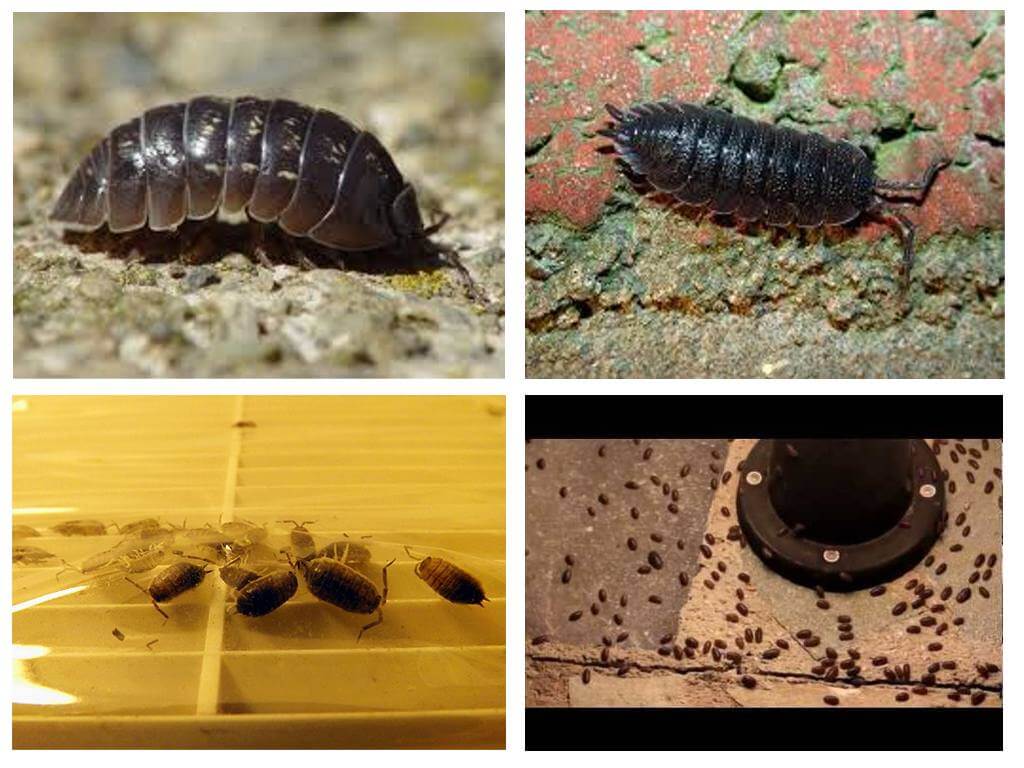
Living in nature, "insects" practically do not touch healthy plants, since they are more attracted to decaying grass. This property makes it possible to allow creatures to live in greenhouses and hotbeds. Once in the greenhouses, they can gnaw seedlings, but do not bring significant damage. In the compost heap or layers lining broad-leaved forests, these small “bugs” are indispensable. They quickly process dead plants, contributing to their rapid decomposition. They are able to eat spores of fungi from the leaves of various plants, preventing further infection.
Important! It is difficult to overestimate the importance in the nature of these organisms, because what eat woodlice faster goes through the natural cycle: they accelerate the decomposition of organics and contribute to the return of nutrients to the soil.
Who are wood lice
Today, varieties of wood lice are very diverse, some of them live in water, others lead a land-based lifestyle. The main species characteristic does not depend on the way of life: even terrestrial species need a large amount of water, therefore they live only in places of high humidity. They got their name precisely for this reason.
On a note! A person predominantly meets only one species - Porellioscaber. Otherwise, this crustacean is called guinea-wood lice.
At the very beginning, it was believed that wood lice are not an organism adapted to land life. But in recent years, a number of studies have been conducted that have shown the rapid adaptation of the insect to such a life. So, they develop complex behavioral and physiological mechanisms that make it possible to control the supply of water in the body.The forming light or capillary conductive system, which makes it possible to remove nitrogenous wastes with minimal loss of moisture, are considered one of these mechanisms.
Although crustaceans could not live without fresh or moderately salty sea water, they could survive in dry Israel, the northern African continent, and the excessively salty waters of Australia.
Almost all species of wood lice are additional food for lizards and some species of toads. Birds almost never use them for food, because their body releases nitrogen, which is unpleasant for birds. The only predator that hunts only for our attention is the spider of the genus Dysdera.
Louse-pig
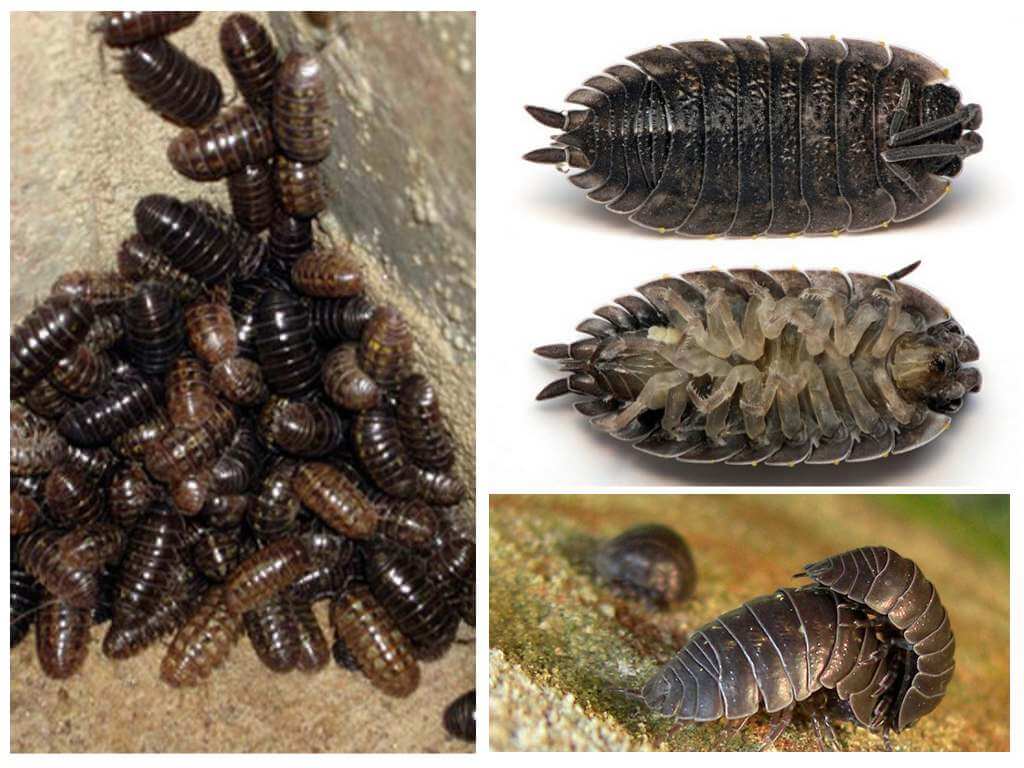
Since one species of wood lice is a concern, one should consider it in more detail. It should be noted right away that although wood louse belongs to the class of crustaceans, it is more convenient and familiar to call it an insect. These creatures are found all over the world: in our country, in Australia, Europe, Africa, Asia and both Americas. Such a prevalence of the insect is due primarily to human activities.
The size of wood lice is up to 2 cm. Most often, its upper part is dark, with a purple tint. Whereas the lower one is pale, almost white.
Interesting! Body color is influenced by environmental factors. Depending on the temperature, these insects can be brown, yellow, pink or blue.
Like all members of the family, mumps prefer to live in conditions of increased dampness, but it is not as dependent on the level of humidity as other species.
Body structure
The structure of the lice is as follows: a distinct head of three petals, on it there are two antennas and complex eyes. Soft tissues are enclosed in an exoskeleton consisting of segments. Such a "carapace" protects woodlice from negative environmental factors. Inherent in most crustaceans, the wax cuticle of this species is not available.
Finding respiratory organs in wood lice is not so simple: they are located under paired plates behind the pectoral legs. They are represented by an internal plate - a kind of gill (respiratory organ) penetrated by blood vessels. The gills are covered by the branches of the abdominal legs, which retain moisture near the gills.
You can see the difference from insects by examining how many legs there are in woodlice, because most insects have three pairs of legs. Mokritsa has seven pairs of walking legs, which distinguishes their description from “relatives” – crayfish, which use five pairs for walking, and three pairs are necessary for eating.
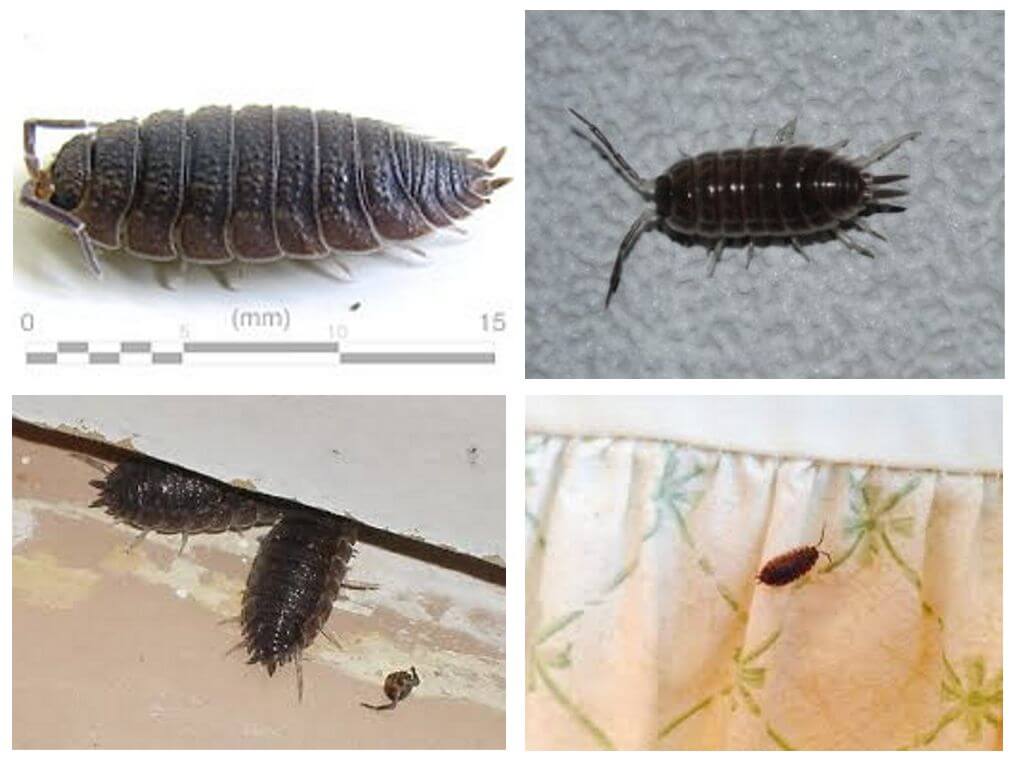
Behavior
The development of wood lice is not enough to be blamed for a conscious search for favorable conditions, so their movements are caused by reflexes. In an attempt to find a place where the body will lose a minimum of moisture, wood lice can change the speed of movement and rotation.
You can conduct an experiment: put wood lice in a dry or even hot place and watch it. She will move faster, spin more actively, looking for a way to escape from the negative environment. When placed in a dark, damp and cool place, the insect moves slowly, sometimes freezing for a long time.
Wood Lice Nutrition
Earlier it was said what woodlice eat. However, in our bathrooms there are no rotting leaves or fungi. But do not worry about this creature, it is able to take care of itself. Nutrition of wood lice in a human home is quite diverse: dirt in the corners of the bathtub, fallen and soaked paper, particles of human skin, separated during washing. If hygiene is maintained at a high level in the bathroom and hard times have come in the life of wood lice, they can encroach on indoor flowers, but will not cause them significant damage.
The reason for this is that the population of woodlice in the house is small, they need very little product to eat. And living food is not healthy or desirable for them.
Reproduction and Life Cycle
Reproduction of wood lice - bisexual.This means that for procreation, partners of different sexes are needed.
Interesting! The female has two genital openings into which the male alternately places his seed. Having completed one, he proceeds to the next.
It is very curious how wood lice grow, because this process has unique features. These crustaceans can breed in any season, but the male must wait for the molt, otherwise the genital openings will be closed. He finds a female in advance and is close to molting. He helps her get rid of the scales, and only after that can begin the process.
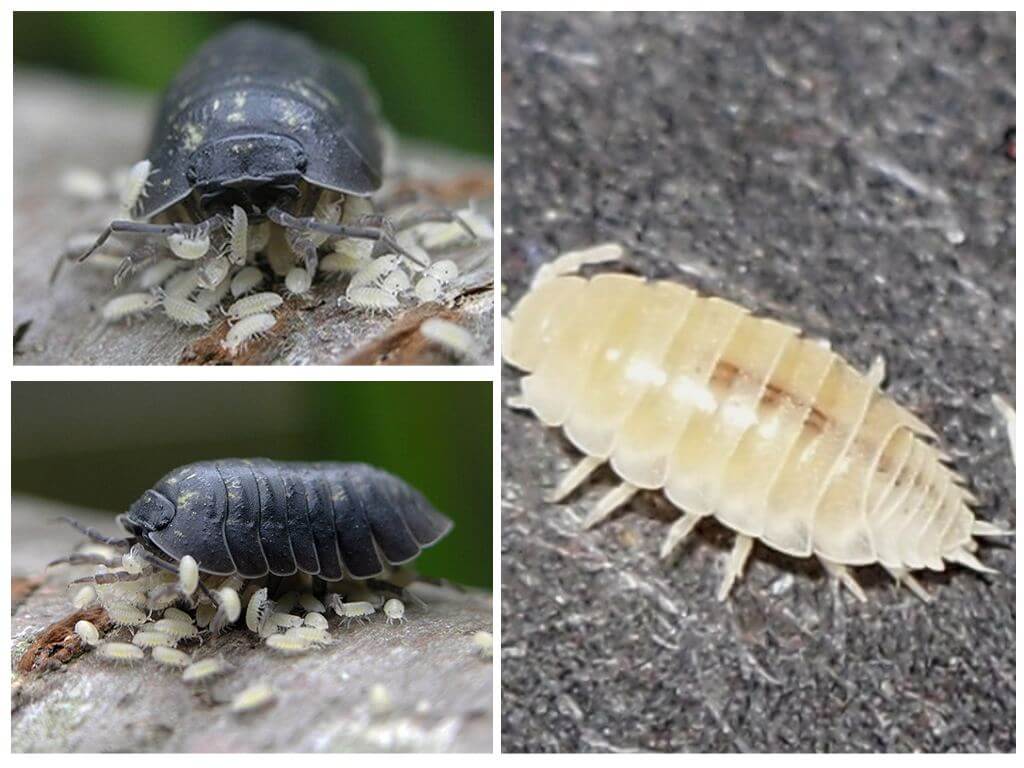
Wood lice larvae are located in a brood sac, similar to a cockroach ooteca. Fertilized eggs are placed in a chamber filled with liquid. Young individuals emerge from there after full maturity.
After the withdrawal, several links should pass, and only then the insect reaches puberty. The difference in the appearance of the young organism and the mature one is so great that many are sure that this is exactly what the larva of the wood louse looks like.
How many woodlice live depends on their living conditions. Their life span can range from 7 days to 2 months.
Interesting! The back of the body molts earlier than the front. The difference may be several days. During this period, the insect looks as if it consists of two different parts. Dropped cuticles of woodlice are eaten.
Lice bites and danger to humans
Some claim to have been bitten by these bugs. However, the mouth of these creatures is intended only for soft, decaying food. They even eat living plant cells with difficulty. Knowing what woodlice eat, you can be sure: they are not able to bite physiologically or physically.
According to the knowledge about these crustaceans to date, these creatures are not carriers of infections, do not bite a person, tend to stay as far away from him as possible. Therefore, we can say with confidence: they do not pose a danger to humans. If you ask why wood lice are dangerous in general, and not just for humans, then this question can be answered: they are not at all dangerous.
Of course, wood lice, for which the habitat is your bathroom, cannot cause sympathy. But starting a fight with them, you should remember what good and harm they are doing and think: maybe it’s better to eliminate the cause of their occurrence in the house than get rid of every wood lice that appeared in the bathroom, because the “bug” is completely harmless.
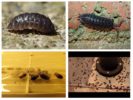
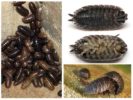
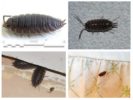
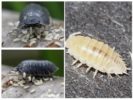
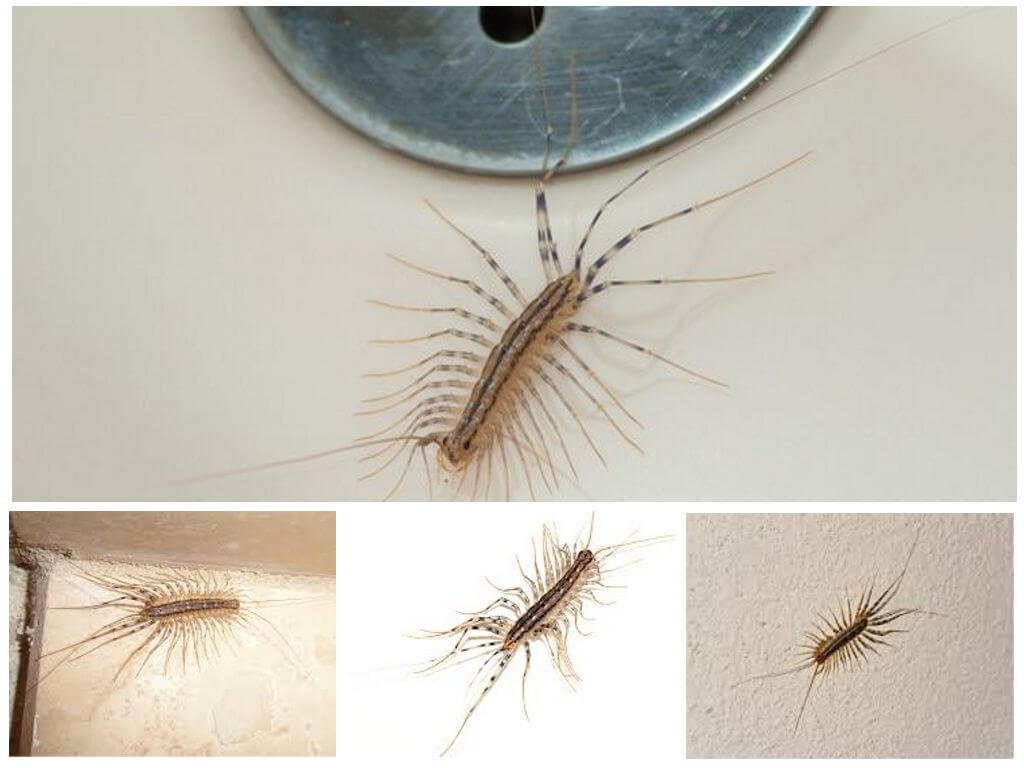
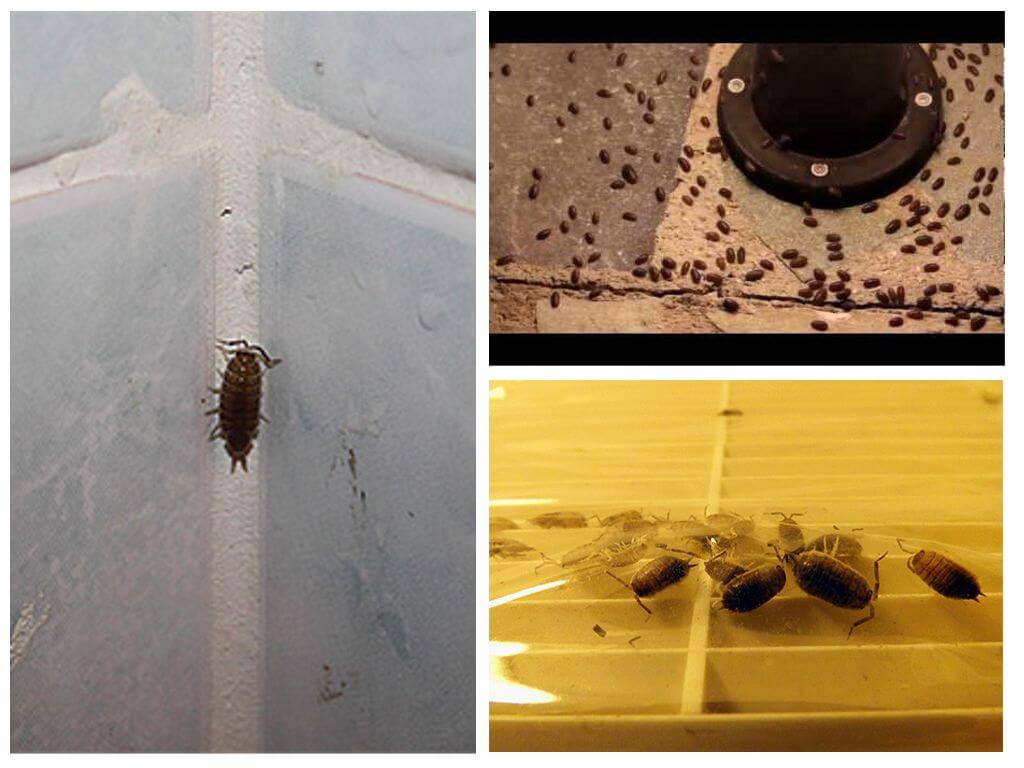
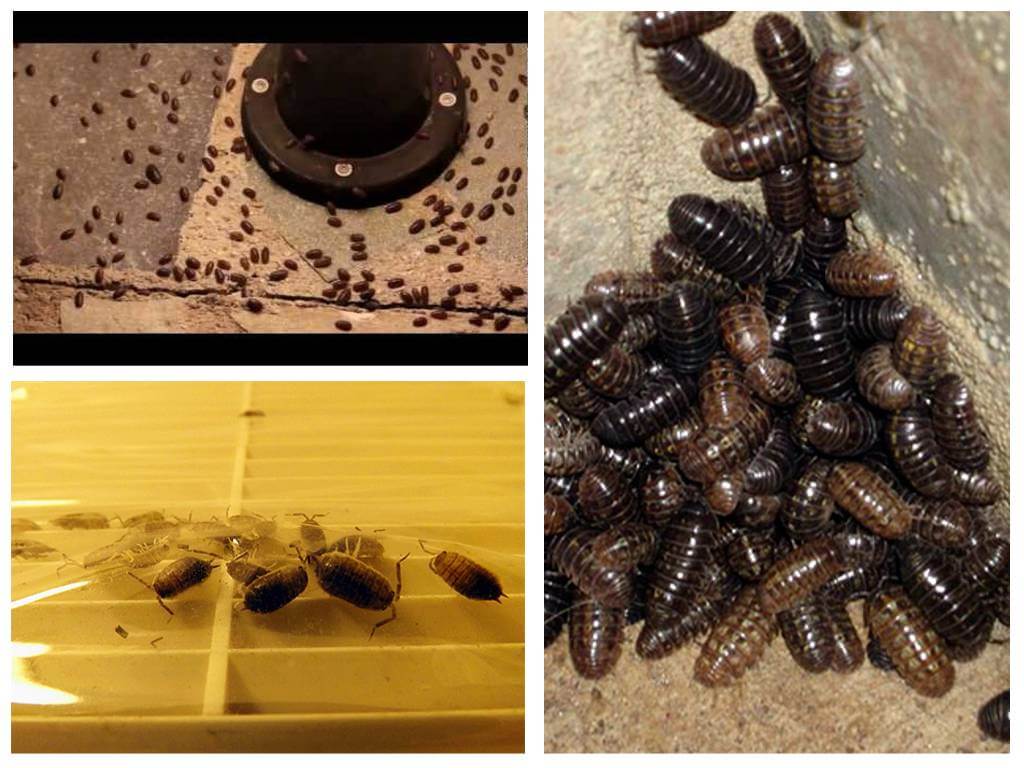
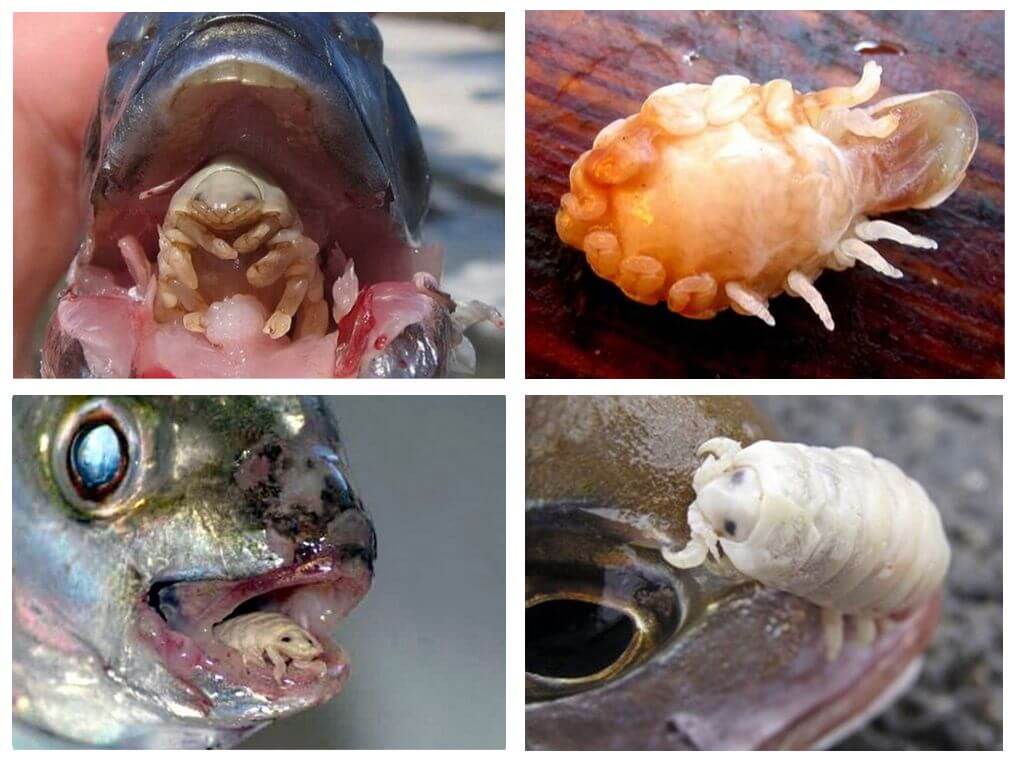
Well, well, it's horrible anyway! I hate them. It’s scary to beat them even with a slipper, but I destroyed them anyway and will do so if they appear. It cannot be that such nightmarish creatures were harmless.
Come on, Masha. Look, centipedes (millipedes) are much more unpleasant in appearance, but also no harm. Only good. So it’s nothing strange that wood lice are useful. A little surprised that these are not insects. On the other hand, I never thought about it. Also with their slipper))) It’s interesting, and if it’s crayfish - are they edible ...
Ivan, what if edible, instead of a slipper you will run after them with a frying pan? I won’t be surprised, by the way, if any of the species is really eaten. Especially Asians - they are cockroaches for a sweet soul.
Somehow I was on a business trip in Kazakhstan. She got to the steppes at work, where workers live in trailers. So these cars are just clogged with wood lice !!! This is really terrible. Even large ones! Now, if I see a couple of our “native” kids at home, I am only glad that there are so few of them. And even a shudder does not cause.
Well, they are pests or not, but for an apartment they are parasites. They feed on our waste, live in our housing. I believe that if they appeared, you need to fight. Another question is how. Indeed, if they are not insects, insect preparations may not work on them. And how to be here?
We are not insects either.However, if we pour on the head a tub of a raid of any kind, we are unlikely to survive. No wonder it is written on each bottle: dangerous, ahtung, etc. And for a tiny woodlice, every drop is equal to a tub.
For them, the main factors are food and humidity. From this, and conclude: keep the house clean and hygienic and do not increase humidity to the state of a greenhouse.
I agree, it is absolutely unbearable to see IT creeping where I will bathe the child. Fortunately, I don’t have them at my place, but at the mother-in-law in the village ... horror is simple. I’ve already bought a separate baby bath, but they still crawl along it. And what to do, I do not know. Even if we pickle today, the next arrival will be the same.
Yes, take it easier. Well crawl. Strongly disdain - pour boiling water over it. Well, they do not drool on your bath, nothing of the kind. Well, maybe they will pump it up a bit - this is not fatal.
In the house, of course, these insects are useless. But in the garden, they are very useful. I have a compost heap over there - I specially throw in it all sorts of such creatures: wood lice, earthworms. The more there will be, the faster compost can be used. Just at least breed them on purpose.
And I read that they feed exotic pets. There are all kinds of spiders, lizards. It seems like they even buy these to indulge in live food. So if that, there is a sales market.
It is said that it is these wood lice that contribute to the treatment of epilepsy. Has anyone else heard of this.